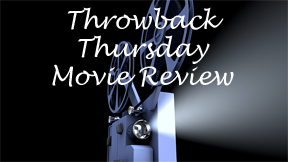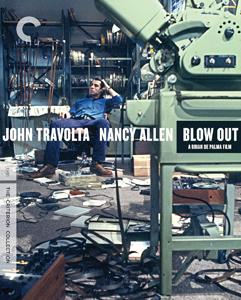As it peers into the dark corners of a massive conspiracy but maintains a personal scope, writer-director Brian De Palma’s solid thriller “Blow Out” (1981) might’ve needed more weirdness. Like the gloriously odd “The Parallax View” (1974), “Blow Out” finds its lead character – movie sound engineer Jack (John Travolta) – in over his head as he realizes the “car accident” that killed a politician was actually a murder.
A naïve but likeable lead
Inspired by the 1966 Italian film “Blowup” (but moving the clues from photographs into the realm of sound), De Palma gussies up a smooth narrative with bursts of style (still effective, and at least interesting as film history). But then his sense of “Wouldn’t it be cool if …” goes too far in the final moments – although it’s not enough to ruin the experience.
In a nicely gritty Philly, Jack doggedly works on cheap horror films; we even see a cot in his sound room of the film studio’s HQ. When gathering sound one night on a bridge, he witnesses the crash and rescues prostitute Sally (Nancy Allen) from the river; the politician is already bloodied and dead.

“Blow Out” (1981)
Director: Brian De Palma
Writers: Brian De Palma, Bill Mesce Jr.
Stars: John Travolta, Nancy Allen, John Lithgow
The “Parallax View” parallels are obvious, starting with the politician’s aide asking Jack and Sally to not tell anyone that they were there. It would hurt the politician’s family, and he’s dead anyway, so what’s the point? But when Jack hears a gunshot before the tire blowout when listening to his recording, he can’t let it go.
Jack is naïve and likeable – clearly a good guy with the way he treats bubbleheaded Sally, digging her but not being sexually aggressive while she’s in her shaken state. But maybe that’s not right for this material.
He needs a little more edge, considering how De Palma wants to wrap this story up. At the studio, sleazy producer Sam (Peter Boyden) needs a scream to match with a girl who was hired for her “t**s,” not her screaming ability.
(SPOILERS FOLLOW.)
A scream of an ending (Spoilers)
When we get to the scene of Sally screaming as she’s attacked by the conspiracy’s henchman, I knew Jack – who has wired Sally for the sake of evidence-gathering — would use that scream in the horror film. However, it only rings true if Sally survives and they can have a good laugh about it.
Because the villain kills Sally before Jack gets there and kills the villain, it seems very out of character that Jack would use the scream recording. Travolta does his best to look unhinged in that final moment in the recording studio, repeating “It’s a good scream.” But the actor hadn’t put enough instability or job-obsession into his performance prior to that; he had come off as a combination of too cool for school and naïve about the danger (until it is obvious).

Notably, if he grasps that people are trying to kill him and Sally, he should get the TV guy to come to his place and safely escort them to the studio, at which point they will hand over the recording and footage. Instead he sends Sally out to meet the TV guy, allowing the villain to smoothly slide in.
That final scene is clever when abstractly theorizing about cool cinematic beats, but it rings hollow as it actually plays out.
(END OF SPOILERS.)
Style in service of mood
Otherwise, De Palma’s cocky style touches serve “Blow Out” well, including his beloved split screens (groundbreaking on “Carrie”) and Hitchcockian composited shots. The shot of the lead duo backed by the Liberty Day fireworks is simply beautiful. The shot of Jack thinking about the crash with the crash on rear-projection, representing his thoughts, is a clever new use for the Hitchcockian technique.
This might be style over substance, but for one thing, the film is taut enough that we’ll allow quick indulgences. For another, style helps create a mood, and “Blow Out” – which, like “The Parallax View,” doesn’t intend to reveal the conspiracy — needs to be a mood piece about paranoia.
De Palma doesn’t totally achieve it, despite the sleazy City of Brotherly Love, the neat peeks into the logistics of sound recording in 1981, and the game cast – also including Dennis Franz and John Lithgow.
The writer-director doesn’t land the deep-seated paranoia the way Alan J. Pakula does on “Parallax.” The yarn spins into something more traditional thanks to Lithgow’s villain taking matters into his own hands. The film morphs into a standard serial-killer thriller, albeit with the creepy element (which calls to mind some Agatha Christie stories) wherein he slays other call girls merely to hide the true reason for targeting Sally.
Although Lithgow, Franz and Allen are far from phoning it in, the lead actor and his “Grease”-y star power hold our focus. Travolta does it with charm rather than with unstable edge. There’s nothing wrong with that for 90 percent of the film, but it’s not what “Blow Out” ultimately calls for.

